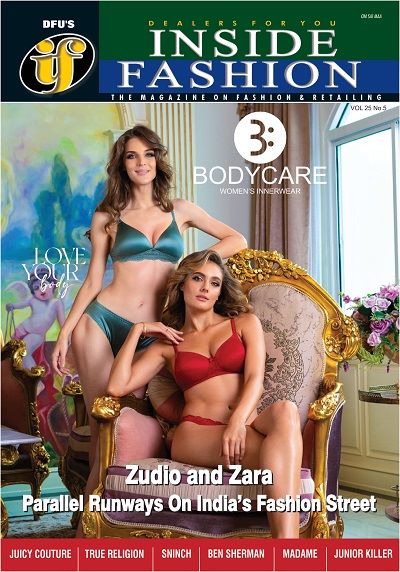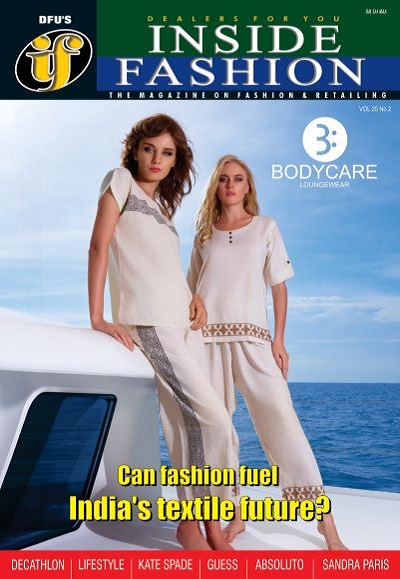Kurta 2.0: How men’s ethnic wear became India’s fastest-growing fashion segment

12 November 2025, Mumbai
The classic kurta-pyjama, long seen as a symbol of South Asian heritage, is having a modern renaissance. Once reserved for festivals and ceremonies, it has been reinvented as a statement of everyday style a reflection of India’s cultural self-confidence meeting global fashion sensibilities. This evolution, often dubbed ‘The Great Unstitch’, has turned the once-humble garment into a powerful economic force within India’s booming men’s apparel industry.
From ritual wear to runway relevance
For decades, the kurta-pyjama was an occasional indulgence, worn at weddings, Diwali gatherings, or religious functions. But in the last few years, it has entered the mainstream as part of wardrobes, workplaces, and wedding selfies. Its rebranding from a traditional outfit to a contemporary lifestyle choice reflects broader shifts in India’s economy and culture.
The data backs the transformation.
|
Metric |
Indian ethnic wear market (overall) |
Indian menswear market (Overall) |
Men's ethnic wear segment (Niche) |
|
Market Valuation (2024) |
$197.2 bn |
$20.4 bn |
6% of the overall menswear market |
|
Projected Market Value (2033) |
$558.5 bn (by 2033) |
$38.8 bn (by 2033) |
Projected to grow at a CAGR of nearly 20% (over next 4 years) |
|
Projected CAGR |
12.6% (2024-2033) |
7.4% (2025-2033) |
Fastest-growing apparel segment |
Sources: Business Research Insights, IMARC Group, Technopak This table underscores a telling trend: men’s ethnic wear is outpacing the broader menswear market, expanding nearly three times faster than Western apparel.
Rising incomes, rising confidence: the economic tailwind
The growth of India’s aspirational middle class especially in Tier-II and Tier-III cities has turned fashion into a key expression of identity. With household disposable income per capita projected to reach Rs 2.2 lakh by FY2028 (CRISIL), spending on premium and branded ethnic wear has grown. For many young Indians, particularly in semi-urban markets, a stylish kurta or bandi jacket has become a marker of taste and success akin to owning a well-fitted suit in the 1990s. This shift has created a fertile market for both organized and designer-led players who are redefining men’s celebration wear.
How e-commerce wove ethnic wear into everyday life
If disposable income was the spark, digital retail was the accelerant. The explosion of e-commerce and social media has turned ethnic wear into an always-available, always-visible fashion category.
Table: India online apparel market 2030 projections
|
E-commerce market |
Value/Projection |
Insight |
|
Indian Online Apparel Market Size (2030) |
$63 bn |
Represents a massive future market valuation. |
|
Compound Annual Growth Rate (CAGR) (2025-30) |
24% |
Indicates extremely rapid market expansion. |
|
Share of Ethnic Wear in Online Apparel Sales |
Estimated 10-12% |
A significant and fast-growing sub-segment. |
|
Digital Drivers |
Celebrity endorsements, influencer marketing, and customization |
The primary mechanisms fueling growth and consumer engagement. |
The fusion effect
The modern Indian man no longer sees tradition and trend as opposites. The kurta-pyjama has evolved in silhouette, fabric, and styling to keep pace with the country’s changing fashion vocabulary. The rigid rule of pairing a kurta with a pyjama has broken down, giving way to the wildly popular Indo-Western look, where tradition meets comfort. The most visible element is the Nehru jacket or bandi jacket, which is now a versatile wardrobe staple. Pairing an intricately embroidered jacket with a plain kurta and trousers instantly transforms the outfit for a formal or semi-formal look. The pajama or churidar is frequently replaced by dhoti pants, Jodhpuri trousers, or even well-fitted chinos/jeans for a younger, casual twist.
The modern men's kurta ensemble is defined by its dramatic cuts, fabric innovation, and focus on versatility.
|
Feature |
The Traditional kurta-pyjama |
The transformed kurta ensemble |
|
Silhouette/Fit |
Straight-cut, loose-fit, maximum comfort. |
Slim-fit, asymmetrical, high-low, and draped cuts (e.g., cowl kurtas). |
|
Fabric |
Cotton, simple silk, or handloom khadi. |
Velvet, brocade, linen blends, jacquard, often with sustainable/organic sourcing. |
|
Colour Palette |
White, cream, traditional jewel tones (maroon, gold). |
Soft pastels (mint green, lilac, ivory), bold hues (midnight blue, emerald), and florals. |
|
Styling |
Minimalist; worn as a single set. |
Layered with Nehru/bandi jackets, printed stoles, brooches, and designer footwear (juttis/mojaris). |
Regional artistry goes mainstream
Artisanal crafts like Lucknowi chikankari, Banarasi silk, and Rajasthani block prints have moved from local boutiques to e-commerce storefronts. What was once regional exclusivity is now part of a nationwide design language, thanks to digital logistics and online curation.
The brand wars
Manyavar, the market maker: When Vedant Fashions launched Manyavar in 1999, it transformed ethnic wear retail from an unorganized cluster of local boutiques into a category-defining segment.
Manyavar positioned the kurta and sherwani as celebration wear, turning them into aspirational purchases. Its campaigns featuring Virat Kohli and Ranveer Singh elevated ethnic attire to premium status.
The brand expanded via a Company-Owned, Company-Operated (COCO) model, maintaining consistency across over 500 stores and strong representation in diaspora markets.
Manyavar’s success proved that cultural authenticity, when coupled with design innovation and brand storytelling, could yield scale comparable to Western wear giants. The success of Manyavar attracted major corporate players, further pushed up the market's transformation.
Tasva (Aditya Birla Fashion + Tarun Tahiliani): Launched aggressively, focusing on bridging the gap between designer wear and accessible luxury. Tasva has reportedly seen its business double in the last year, with an expansion plan to add hundreds of new stores, highlighting the market’s enormous potential.
Read our latest issue
Ethnix (by Raymond): Raymond, an established giant, also scaled up its Ethnix line to target Tier-II and III cities, which comprise an estimated 85 per cent of the market, with competitively priced, modern ethnic wear.
Fabindia Men: Fabindia operates in a distinct niche, prioritizing craft, sustainability, and authenticity. While Tasva and Ethnix focus heavily on wedding and celebratory occasion wear (sherwanis, indowestern suits), Fabindia Men offers a wider range of ethnic apparel, including options for daily wear and conscious consumers.
The brand’s aesthetic is classic, relying on the intrinsic value of its fabrics and handiwork. Consumers who prioritize ethical sourcing, natural materials, and authentic Indian craft over fast fashion or high-gloss occasion wear.
With handloom and sustainable focus it offers a lifestyle choice that stands apart from the occasion-wear-dominant market.
Table: Big brands in men’s ethnic wear market
|
Feature |
Tasva |
Ethnix by Raymond |
Fabindia Men |
|
Parent Company |
Aditya Birla Fashion & Retail + Tarun Tahiliani |
Raymond Group |
Fabindia |
|
Strategic Focus |
Premium, Designer-Inspired Wear at Accessible Prices |
Accessible, Modern Silhouettes for Mass Market |
Sustainable and Artisanal Menswear |
|
Pricing Strategy |
Premium/Upper-Mid Range. Positioned at a slight premium to competitors like Manyavar. |
Mass Market/Mid-Range. Focuses on accessible pricing to drive volume and penetration in smaller cities. |
Mid-Range. Reflects the value of handlooms and artisanal crafts. |
|
Target Customer |
Modern, Affluent Indian Men in metros and Tier-I cities seeking designer aesthetics for wedding and occasion wear without the ultra-high-end designer price tag. |
Value-Conscious Men in Tier-II/III cities looking for modern ethnic and wedding wear. Focus on broader appeal and quick fashion trends. |
Conscious Consumers across all tiers, who value sustainability, handloom, and craft, often for everyday ethnic wear and festive occasions. |
|
Design DNA |
High-Fashion/Designer Aesthetics. Modern, sophisticated silhouettes with an emphasis on fit, fabric, and designer touch (Tarun Tahiliani influence). Focus on occasion wear. |
Contemporary & Modern. Offers a wide range of designs for various occasions, focusing on modern cuts and appealing to mass trends. Focus on occasion wear/wedding wear. |
Traditional, Handcrafted & Sustainable. Utilizes Indian handlooms, natural fibers, and artisanal techniques. Designs are generally more classic and lifestyle-oriented. |
|
Growth Strategy |
Aggressive expansion with plans for 200+ stores, leveraging the premium space. |
Aggressive expansion with 85% of growth in non-metro cities (Tier-II/III) to capture the mass market. |
Diversifying product mix and retail presence to move from a lifestyle brand to a full-fledged fashion retailer. |
Global demand for Indian aesthetics
As Indian diaspora communities grow in North America, Europe, and the Middle East, demand for ethnic menswear abroad is rising sharply. Export-oriented D2C brands like Kalki, Qbik, and Rohit Bal Men now cater to NRIs seeking designer looks delivered worldwide.
As per IMARC, the global ethnic menswear export market from India is expected to exceed $1.5 billion by 2028, driven by weddings, cultural festivals, and film-inspired fashion.
Thus the Indian men’s kurta-pyjama has transcended its traditional confines.
No longer symbolic of just heritage, it now represents a modern Indian masculinity that is confident, expressive, and globally aware. With fashion cycles shortening, fabrics diversifying, and digital sales multiplying, the line between ethnic and everyday wear continues to blur. The next phase of this $38-billion market will likely be defined by sustainability, personalization, and export growth where the unstitched will keep weaving new stories.










